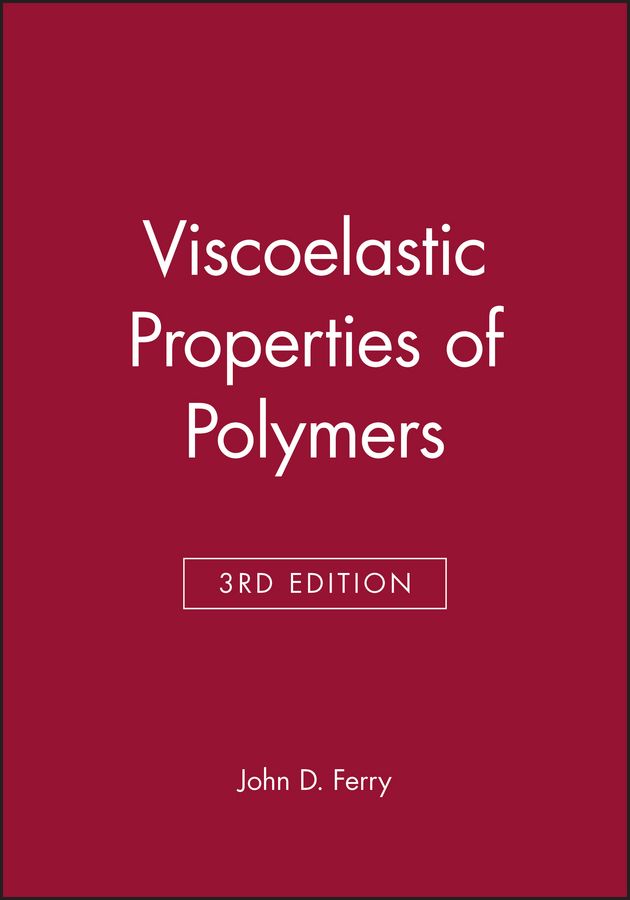Viscoelastic behavior reflects the combined viscous and elastic responses, under mechanical stress, of materials which are intermediate between liquids and solids in character. Polymers the basic materials of the rubber and plastic industries and important to the textile, petroleum, automobile, paper, and pharmaceutical industries as well exhibit viscoelasticity to a pronounced degree. Their viscoelastic properties determine the mechanical performance of the final products of these industries, and also the success of processing methods at intermediate stages of production. Viscoelastic Properties of Polymers examines, in detail, the effects of the many variables on which the basic viscoelastic properties depend. These include temperature, pressure, and time; polymer chemical composition, molecular weight and weight distribution, branching and crystallinity; dilution with solvents or plasticizers; and mixture with other materials to form composite systems. With guidance by molecular theory, the dependence of viscoelastic properties on these variables can be simplified by introducing certain ancillary concepts such as the fractional free volume, the monomeric friction coefficient, and the spacing between entanglement loci, to provide a qualitative understanding and in many cases a quantitative prediction of how to achieve desired results. The phenomenological theory of viscoelasticity which permits interrelation of the results of different types of experiments is presented first, with many useful approximation procedures for calculations given. A wide variety of experimental methods is then described, with critical evaluation of their applicability to polymeric materials of different consistencies and in different regions of the time scale (or, for oscillating deformations, the frequency scale). A review of the present state of molecular theory follows, so that viscoelasticity can be related to the motions of flexible polymer molecules and their entanglements and network junctions. The dependence of viscoestic properties on temperature and pressure, and its descriptions using reduced variables, are discussed in detail. Several chapters are then devoted to the dependence of viscoelastic properties on chemical composition, molecular weight, presence of diluents, and other features, for several characteristic classes of polymer materials. Finally, a few examples are given to illustrate the many potential applications of these principles to practical problems in the processing and use of rubbers, plastics, and fibers, and in the control of vibration and noise. The third edition has been brought up to date to reflect the important developments, in a decade of exceptionally active research, which have led to a wider use of polymers, and a wider recognition of the importance and range of application of viscoelastic properties. Additional data have been incorporated, and the book s chapters on dilute solutions, theory of undiluted polymers, plateau and terminal zones, cross-linked polymers, and concentrated solutions have been extensively rewritten to take into account new theories and new experimental results. Technical managers and research workers in the wide range of industries in which polymers play an important role will find that the book provides basic information for practical applications, and graduate students in chemistry and engineering will find, in its illustrations with real data and real numbers, an accessible introduction to the principles of viscoelasticity.
Mechanical engineering and materials
Viscoelastic Properties of Polymers
₹26,269.00
This book is currently not in stock. You are pre-ordering this book.

